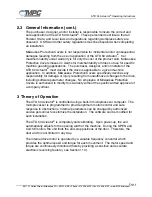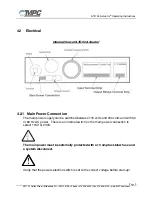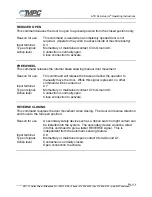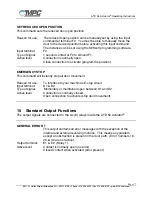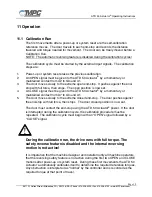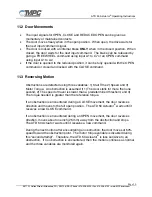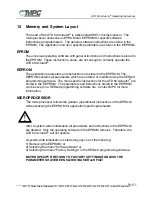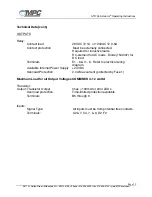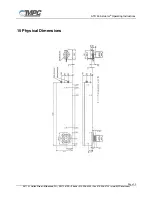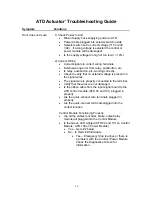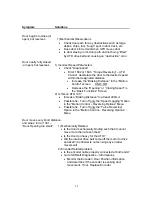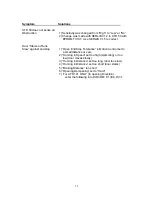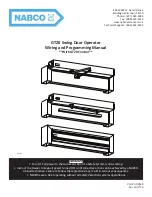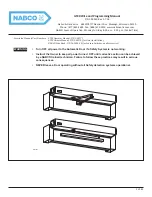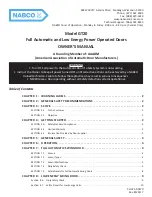
ATD 50 Actuator
®
Operating Instructions
Page 19
3811 N. Holton Street • Milwaukee, WI • 53212 •USA • Phone • 414-906-4000 • Fax 414-906-4100 • www.MPCovers.com
11 Operation
11.1 Calibration Run
The first movements after a power-up or system reset are the self-calibration
reference moves. The door travels to each end-stop and records the distance
traveled and torque needed for movement. The door can be freely moved before a
Calibration Run.
NOTE: The automatic reversing feature is disabled during the calibration cycles!
The calibration cycle must be started by the external input signals. The calibration
steps are:
1.
Power-up or system reset erases the previous calibration.
2.
An OPEN signal must be given to the ATD 50 Actua tor
®
by a momentary or
maintained contact from A2 to Ground A1.
3.
The door moves slowly to the extreme open end-stop. It pushes against the end-
stop with full force, then stops. The open position is now set.
4.
A CLOSE signal must be given to the ATD 50 Actuator
®
by a momentary or
maintained contact from A7 to Ground A1.
5.
The door moves slowly to the extreme closed end-stop. The door pushes against
the end-stop with full force, then stops. The door closed position is now set.
The door must contact the end-stop using the ATD 50 Actuator
®
power. If the door
is interrupted during the calibration cycle, the calibration procedure must be
repeated. The calibration cycle must begin with an “OPEN” signal followed by a
“CLOSE” signal.
During the calibration run, the drive runs with full torque. The
safety reverse feature is disabled and the internal reversing
motion is not active!
It is imperative that the machine designer and installer notify all machine operators
that the reversing safety feature is not active during the first two OPEN and CLOSE
motions after power-up or system reset. During these first movements the ATD 50
Actuator¨ automatically calibrates itself to determine the required reference torques.
Any obstruction is interpreted as “normal” by the controller and is recorded as the
required torque at that point of travel.


